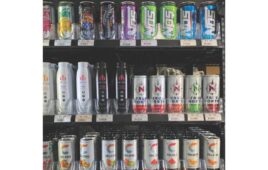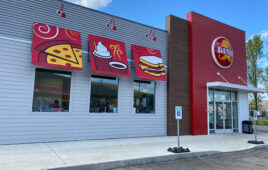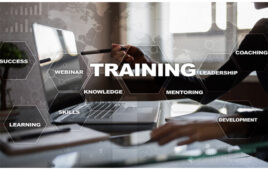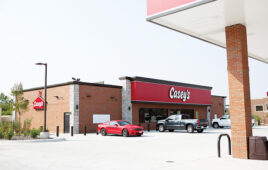 As customers seek healthier beverage options, more shoppers are choosing to drink bottled water. In fact, customers are drinking bottled water more than any other ready-to-drink (RTD) beverage product in the U.S., according to industry consulting firm Beverage Marketing Corp. (BMC). As water continues to gain steam, consumers seek to ride the wake of form, flavor and “good-for-you” combinations.
As customers seek healthier beverage options, more shoppers are choosing to drink bottled water. In fact, customers are drinking bottled water more than any other ready-to-drink (RTD) beverage product in the U.S., according to industry consulting firm Beverage Marketing Corp. (BMC). As water continues to gain steam, consumers seek to ride the wake of form, flavor and “good-for-you” combinations.
“I enjoy the trend of healthy beverages offered where they are striving for transparency in their recipes,” said Fuel City President Joseph Bickham, whose four locations in the Dallas-Ft. Worth Metroplex will soon be joined by a fifth. “Ultimately, these options benefit the consumer.”
Sales of bottled water have been rising every year for the past decade, stealing share from the carbonated soft drink (CSD) segment. According to BMC, in 2008 per person CSD consumption was 46.7 gallons annually. It has dropped every year since, to 37.2 gallons in 2018. As CSD drinking fell, though, U.S. bottled water consumption rose from 27.2 gallons per person in 2009 to 42.3 gallons in 2018.
Energy Buzz
The category as a whole, though, has been strong for the past few years. After slowing in late 2016 through the middle of 2017, non-alcoholic beverage sales rose around 4% in the first quarter of 2019, according to Wells Fargo Securities’ “Beverage Buzz” Survey, released in April.
The same report found that bottled water along with energy beverages and RTD coffee have driven the category forward. Beverage Buzz reported retailers are looking to the energy category to grow dollar sales by nearly 10% this year.
“We expect solid growth in ready-to-drink coffee and energy drinks,” said Gary Hemphill, managing director of research for BMC. “Bottled and canned coffees are growing from a small base; energy drinks continue to see solid growth because the demand for the functional benefit remains quite strong.”

Gary Hemphill, managing director of research for Beverage Marketing Corp.
Bickham said the energy drink segment is a year-round solid performer at his c-stores. “It is not subject to seasonality like other categories,” he said, “and the innovation in this category is peerless.”
Could it be that the definition of an “energy” drink in the eyes of consumers is changing? Cold coffee makers are promoting new uber-caffeinated products as energy drinks — while energy drink makers have jumped into the canned coffee segment. Both have been busy in the form and flavor departments, too. The options seem limitless; among them are white chocolate mocha, salted caramel, draft latte, vegan protein shake cold brew, espresso triple shot, super espresso caramel or vanilla — you get the picture.
While the endless variety has blurred category lines, it’s also created more packaged beverage options for consumers.
Hemphill offered a caveat, though. He said that new flavor innovation hasn’t always been able to show sustained growth. Retailers must continually assess how well new products are performing.
Bickham does just that. “We constantly add new products and examine our product mix to decipher our customers’ habits,” Bickham said. “We maintain a flexible area in our vault for piloting new products.”
Carbonated Sales
Fuel City relies on customer feedback as well as market research to help with new product guidance, Bickham said.
Innovation isn’t limited to flavors, either. Packaging trends reflect an effort by beverage manufacturers to offer novel options.
“We’re seeing more smaller-size packages come to the market — especially for carbonated soft drinks,” Hemphill said. “As companies work to reduce caloric intake from their products, reducing serving sizes is one way to do this.”
And amidst all the new directions the RTD category is moving, carbonated beverages are holding their own. BMC reported in May that carbonated drinks continued to occupy four of the five top beverage brands by volume. While CSD sales volume was pretty much flat last year, it was the category’s best performance since 2005. While modest, CSD annual sales from June 2018 to June 2019 have increased 2.7%, according to Nielsen’s “Beverage All Channel Data” report through June 15, 2019.
As consumer tastes evolve, c-store operators are adapting their beverage sets to find the magic balance that’ll have thirsty customers grabbing more from the cold vault.

Source: Beverage Buzz Surveys (April 2019), Wells Fargo Securities LLC




